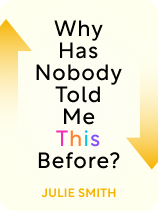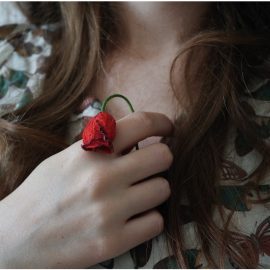

This article is an excerpt from the Shortform book guide to "Why Has Nobody Told Me This Before?" by Julie Smith. Shortform has the world's best summaries and analyses of books you should be reading.
Like this article? Sign up for a free trial here.
When you suffer a loss, should you dive head-first into mourning or stoically carry on? At what point is professional help advised?
In this world, grief isn’t an option. But, healthy mourning is. While you can’t avoid the pain that comes with loss, you can choose to take constructive steps to process the pain in a way that honors your loss and helps you go on with life in a healthy way.
Read more for Dr. Julie Smith’s practical insights into self-care for grief.
Self-Care for Grief
Grief is a complex and human response to loss, significant change, or endings in our lives, which our bodies and brains perceive as profound threats. It’s a process that encompasses many emotional experiences and moods, including sadness, anger, depression, stress, and even joy. Smith emphasizes that grief is natural, healthy, and essential—it doesn’t signify personal failure or inadequacy. While the intensity of grief can be overwhelming, if we try to numb or escape it, we risk dulling all of our emotions, which could leave us feeling adrift and disconnected from our lives.
Smith is a psychologist, but she doesn’t believe everyone needs professional assistance to process the pain of loss. She recommends self-care for grief in typical situations.
(Shortform note: While grief is a normal and healthy response to loss and change in our lives, it can sometimes be so intense and go on for so long that it becomes a condition called prolonged grief disorder (PGD). A person who’s developed PGD in response to, for example, the death of a loved one, may feel a deep longing for the deceased person, constantly think about the death, avoid reminders of the person, and have physical symptoms like fatigue or changes in appetite. Therapy, medication, and support groups can be helpful for people with PGD, and if you’re dealing with PGD symptoms, it’s important to seek professional help.)
Smith explains that grieving people tend to fall into two camps: those who dive into the painful feelings of mourning and those who focus on distracting themselves and moving forward. She argues that neither way is the correct way to grieve, but that, instead, you should find a balance of both strategies.
To make grief feel less overwhelming and frightening, Smith explains that you can build a tolerance for the feelings of grief by experiencing them in small doses and recognizing your strength in enduring it. You can choose to dive into the painful feelings by thinking about your loss or looking at photos, for example. Or you can wait for the feelings to come up spontaneously and allow yourself time and space to feel them. Then, give yourself a break by focusing on other things and doing activities that soothe the body and mind, like taking a bath, exercising, and listening to uplifting or calming music.
| Culture Influences Grief and Mourning As Smith explains, navigating grief and mourning are deeply personal processes that each of us must navigate according to our nature and unique needs. However, the way we grieve and mourn is also greatly influenced by the culture we grew up in. Some cultures, like modern Western society, have a strong death taboo, meaning that people don’t openly discuss death or think about it often because it’s seen as something to be feared and avoided. This may contribute to anxiety and confusion about the feelings of grief and can make it difficult for people in the West to cope or to help others who are grieving. Not all cultures have death taboos. Therefore, not everyone struggles with balancing the process of grief and mourning. For example, the Torajan people of Indonesia openly acknowledge and integrate death into their daily lives, with families keeping the deceased in their homes for an extended period. The Torajan’s lack of a death taboo allows for a more open and honest discussion of death and dying and a more gradual and comfortable process of grief and mourning. |

———End of Preview———
Like what you just read? Read the rest of the world's best book summary and analysis of Julie Smith's "Why Has Nobody Told Me This Before?" at Shortform.
Here's what you'll find in our full Why Has Nobody Told Me This Before? summary:
- Practical tips for managing difficult emotions and thoughts
- Why self-compassion is key to mental health and how you can cultivate it
- How to change your relationship with failure






